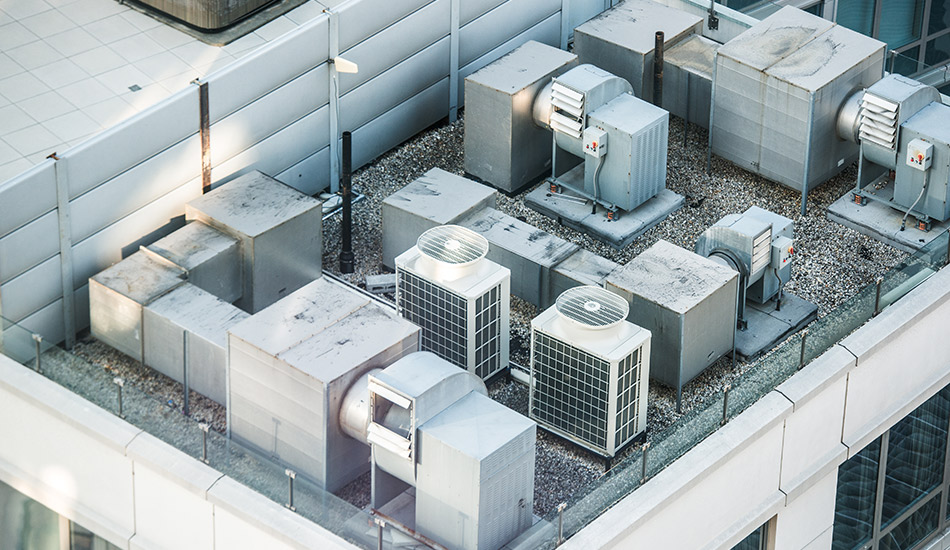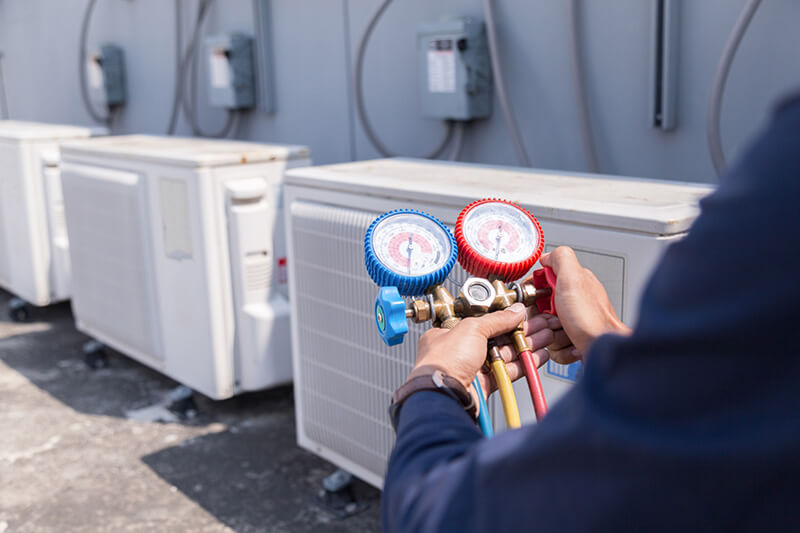Top Strategies for Maximizing Comfort with ductless mini splits
Top Strategies for Maximizing Comfort with ductless mini splits
Blog Article
Exactly How a Heatpump and Heating System Interact to Optimize Your Home's Heating Efficiency
Recognizing how a heatpump and furnace interact is essential for home owners looking for reliable home heating solutions. Each system has its toughness, offering a balanced strategy to home comfort. The warmth pump succeeds in modest temperatures, while the heater provides rapid warmth throughout extreme cold. This synergy not only minimizes energy expenses however likewise boosts the lifespan of both devices. What variables affect this collaboration, and exactly how can homeowners maximize their advantages?
Understanding Warm Pumps: Exactly How They Function
Several people may be unknown with their inner functions, warmth pumps play an important role in modern heating systems. These gadgets run by moving warm from one area to an additional, utilizing the concepts of thermodynamics. In chillier months, a heatpump removes warmth from the outside air, ground, or water, and transfers it inside your home to warm up the space. Conversely, throughout warmer months, it can reverse the process, serving as an ac unit by removing warm from inside to the outside.Heat pumps contain an evaporator, condenser, compressor, and expansion shutoff. The cooling agent within the system takes in warm as it evaporates at low temperatures and pressures. The compressor after that enhances the pressure and temperature of the cooling agent, permitting it to release heat as it condenses. This efficient process can substantially reduce energy consumption compared to traditional heating techniques, making heatpump a sustainable choice for environment control in homes.
The Role of Furnaces in Home Home Heating
Furnaces play an essential role in home heating by providing a reputable source of heat during the colder months. They operate by creating warmth through burning or electrical resistance, dispersing it throughout the home via ducts or radiant systems. The performance of a heater is frequently measured by its Yearly Fuel Usage Performance (AFUE) ranking, which suggests just how properly the system converts gas into heat.Furnaces can make use of different energy sources, consisting of all-natural gas, propane, electricity, or oil, enabling property owners to choose the most ideal option for their requirements. Unlike heatpump, which may have a hard time in severe cool, furnaces maintain constant performance, making sure that indoor temperature levels stay comfy no matter of exterior conditions. Furthermore, modern furnaces usually come furnished with innovative technology, such as variable-speed blowers and smart thermostats, improving their performance and responsiveness. This adaptability makes furnaces a vital part in all-encompassing home heating methods.

Benefits of Using Both Equipments With Each Other
Integrating the toughness of both heating systems and warm pumps can lead to a more efficient and effective home heating solution. Utilizing both systems permits home owners to capitalize on the heat pump's power performance throughout milder temperature levels while relying upon the furnace for more extreme cold problems. This dual strategy can substantially minimize energy costs, as heatpump eat much less electrical power than traditional home heating techniques when temperatures are moderate.Additionally, making use of both systems together can improve convenience degrees in the home. Heatpump can provide consistent, even home heating, while furnaces can promptly increase ambient temperature levels when needed. The combination of both systems can expand the lifespan of tools by reducing wear and tear on each system, as they share the work. Ultimately, house owners can delight in a balanced, cost-efficient heating service that changes seamlessly to differing climate condition, making sure a cozy and inviting home throughout the cold weather.
Exactly How Warmth Pumps and Furnaces Complement Each Other
They create a complementary heating system that makes best use of efficiency and convenience when property owners integrate warm pumps and heating systems. Warm pumps run by moving warmth from the outdoors air or ground, making them very efficient in moderate environments. They succeed during milder temperature levels, supplying economical home heating. On the other hand, furnaces create warmth via burning or electrical resistance, delivering solid, prompt heat during extreme chilly conditions.The mix of these 2 systems permits vibrant changes based on temperature level changes. Throughout warmer months or milder wintertime days, the heat pump can take the lead, preserving power and decreasing costs. As temperatures decrease, the furnace can perfectly engage, making sure constant warmth throughout the home. This harmony not just enhances energy usage however also improves the life-span of both why not look here systems, as each system runs within its optimal efficiency variety. Together, they create a well balanced setting that adjusts to differing climate demands.
Maximizing Effectiveness: Tips for Homeowners
Homeowners can boost their home heating performance via several useful methods. Establishing a regular maintenance timetable, incorporating clever thermostat innovation, and implementing effective insulation and securing solutions are essential steps. These actions not only improve convenience yet additionally decrease power prices.
Regular Upkeep Arrange
To ensure optimal heating performance, establishing a normal upkeep schedule is crucial for any kind of home. House owners should prioritize regular examinations of both warm pumps and heaters to ascertain peak efficiency. This includes transforming air filters every one to 3 months, as stopped up filters can significantly decrease effectiveness. Furthermore, organizing specialist upkeep a minimum of annually permits specialists to determine and address potential concerns before they intensify. Home owners must additionally clean up the heatpump's outside device to stop debris build-up that can hinder air flow. By sticking to a normal upkeep schedule, property owners not just boost their heater' efficiency however likewise extend their life-span, leading to higher comfort and decreased energy expenses throughout the cooler months.
Smart Thermostat Integration
Integrating a smart thermostat right into a home heater can substantially boost power performance, particularly as it enables accurate control over temperature level setups. These devices can discover the home owner's timetable and preferences, automatically adjusting the temperature level to enhance comfort while reducing energy use. They can lower heating during times when the home is empty, minimizing unnecessary consumption. Several wise thermostats also offer real-time energy use information, making it possible for property owners to make educated decisions concerning their home heating practices. In addition, remote gain access to through smart device apps allows users to readjust settings from anywhere, making certain the home is warm upon return. Generally, smart thermostat integration not just enhances convenience yet substantially adds to power savings and efficiency.
Insulation and Sealing Solutions
Smart thermostats play an important role in power performance, but their effectiveness can be substantially boosted by proper insulation and sealing solutions. House owners ought to prioritize insulating attics, wall surfaces, and floorings to minimize heat loss. High-grade insulation products, such as spray foam or fiberglass, can substantially improve thermal resistance. In addition, securing voids around doors, home windows, and air ducts prevents cold air infiltration and warm getaway. Weatherstripping and caulking work methods for resolving these leakages - furnace replacement. Regular evaluations for air leakages, along with the use of blower door tests, can aid identify trouble areas. By purchasing insulation and sealing, homeowners can enhance the efficiency of their heating unit, ultimately resulting in lowered energy intake try these out and lower utility expenses
Typical Misconceptions About Heat Pumps and Furnaces
What false impressions border warm pumps and heaters? Many individuals incorrectly think that warm pumps are ineffective in colder environments. Actually, contemporary warmth pumps are created to operate successfully also in low temperature levels, giving dependable heating throughout winter months. Another common myth is that furnaces are constantly a lot more efficient than warm pumps. However, this depends upon the specific power resources and effectiveness scores of the devices in question. Some may also assume that using both systems all at once is unneeded, but as a matter of fact, this mix can optimize heating performance, particularly throughout severe weather. Furthermore, individuals often presume that heatpump require consistent maintenance, when actually, they have comparable upkeep requires to conventional heating unit. By debunking these misconceptions, home owners can make even more educated choices regarding their home heating alternatives, inevitably causing boosted comfort and power efficiency in their homes.
Upkeep Factors To Consider for Combined Equipments

Frequently Asked Inquiries
Can Heat Pumps Job Properly in Exceptionally Cold Climates?
Heat pumps can struggle in very cold climates because of lowered effectiveness and warmth removal constraints. Innovations in technology have actually led to versions developed for better performance in such problems, improving their feasibility in harsh environments.
The Length Of Time Do Warmth Pumps and Furnaces Normally Last?
Warm pumps normally last 15 to two decades, while heaters have a lifespan of 15 to 30 years. Regular maintenance can extend their long life, making sure effective procedure and decreasing the demand for premature replacements.

What Is the Average Cost of Setting Up Both Solutions?
The ordinary expense of setting up both a heatpump and a heating system usually varies in between $5,000 to $10,000 - ductless mini splits. Factors influencing this expense include system dimension, installment complexity, and local labor prices
Are There Tax Incentives for Using Energy-Efficient Heating Systems?
Several homeowners inquire about tax obligation motivations for energy-efficient furnace. Different federal and state programs commonly use rebates or credit scores, urging the fostering of sustainable modern technologies to minimize energy usage and advertise environmental duty.
How Do I Choose the Right Size Warm Pump and Heater?
Picking the appropriate size heatpump and furnace includes calculating the home's square video, taking into consideration insulation high quality, and assessing local climate. Consulting a professional can guarantee suitable system efficiency and energy efficiency based upon certain needs. heat pump replacement ooltewah tn. Recognizing just how a warm pump and furnace work together is crucial for home owners seeking efficient heating remedies. In chillier months, a warmth pump removes warmth from the outside air, ground, or water, and transfers it inside your home to warm the living room. When property owners incorporate heat pumps and furnaces, they create a complementary home heating system that makes best use of performance and convenience. Warm pumps operate by moving warmth from the outdoors air or ground, making them extremely effective in modest climates. Heat pumps can have a hard time in very chilly environments due to reduced effectiveness and warm removal constraints
Report this page